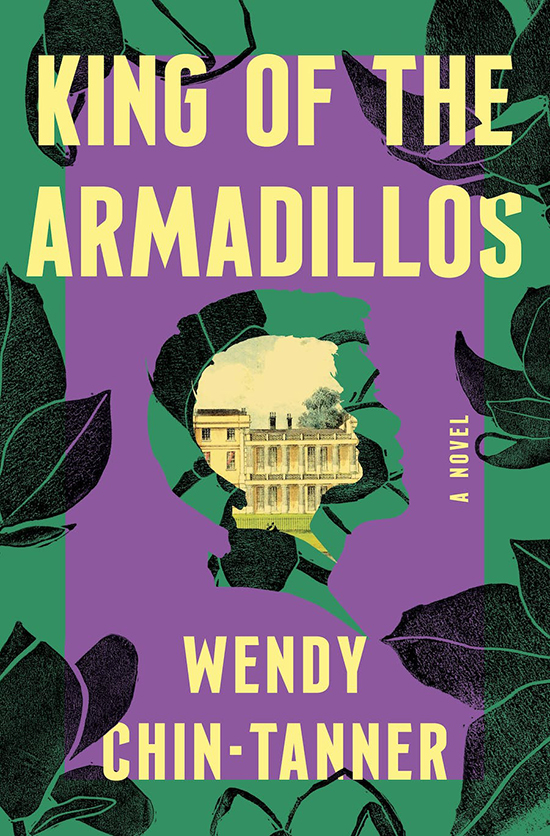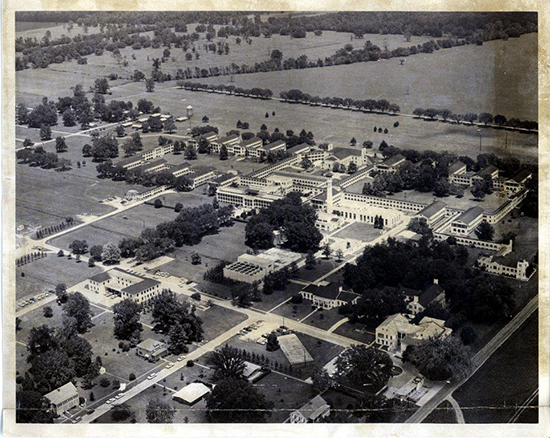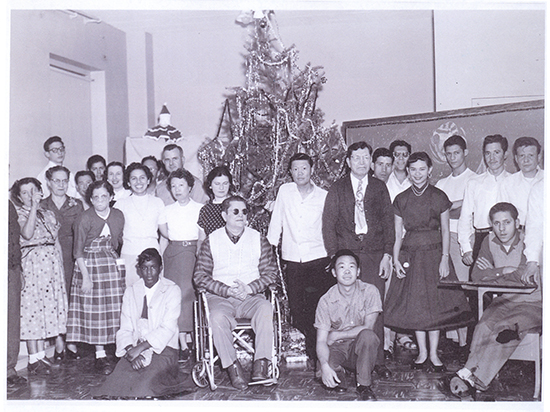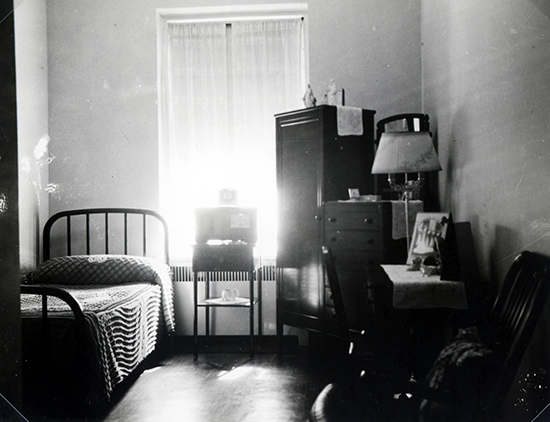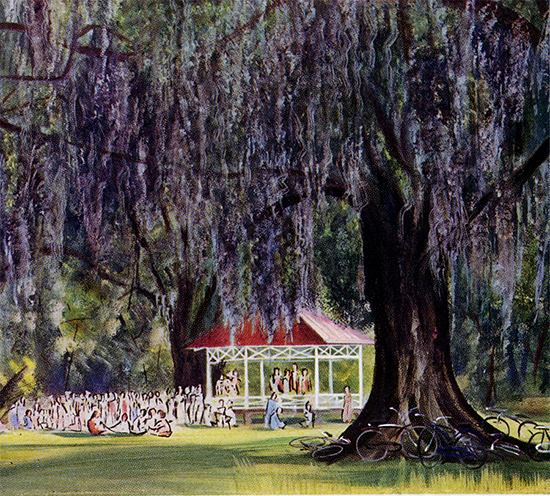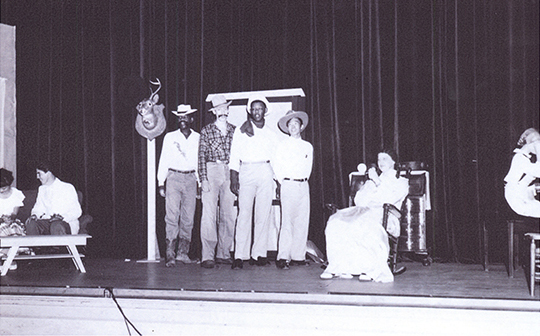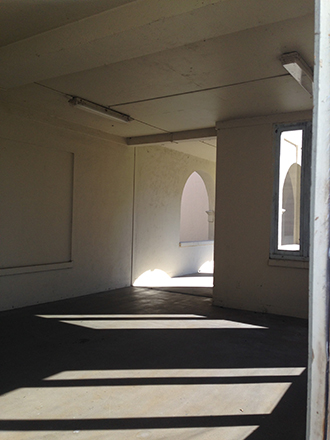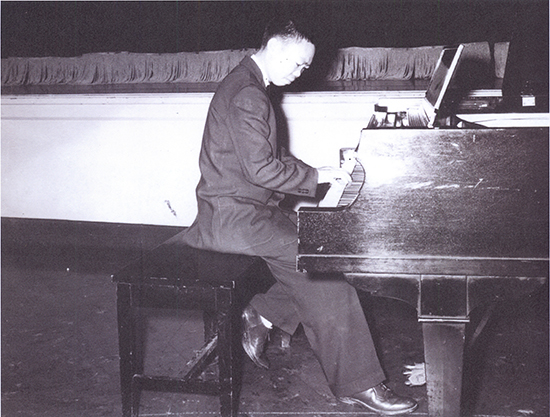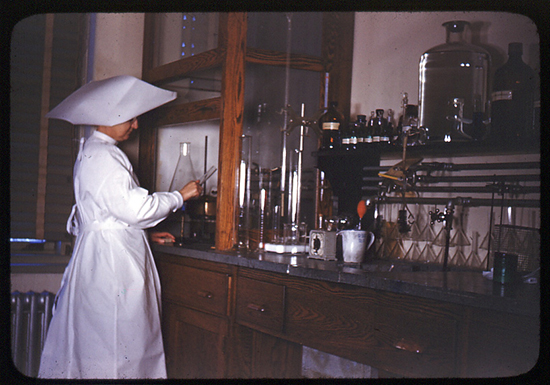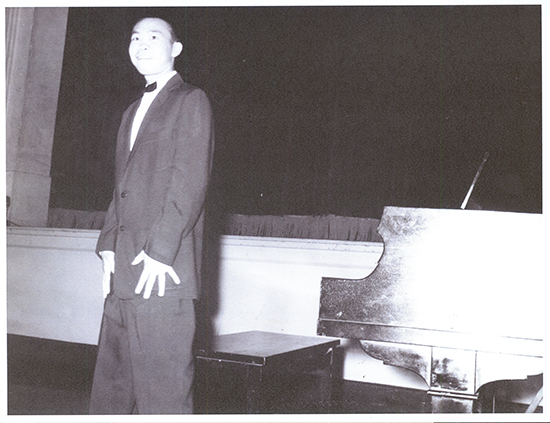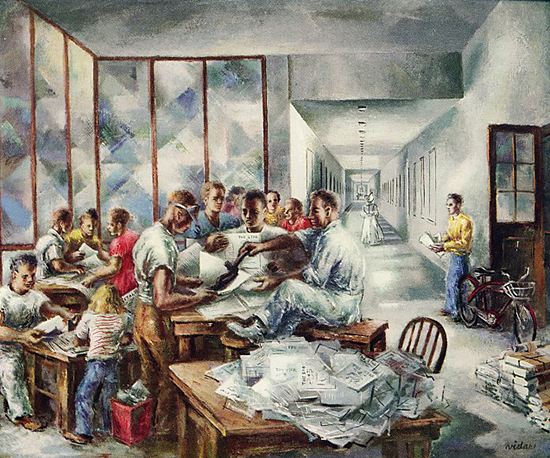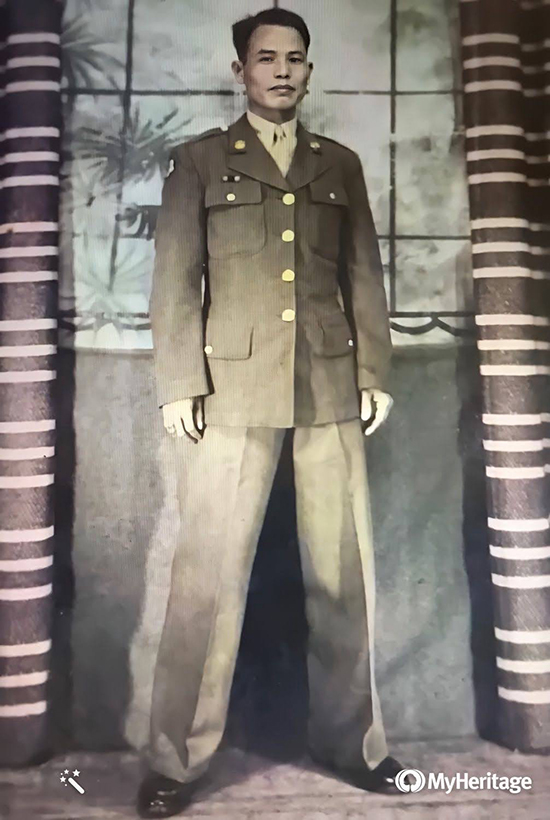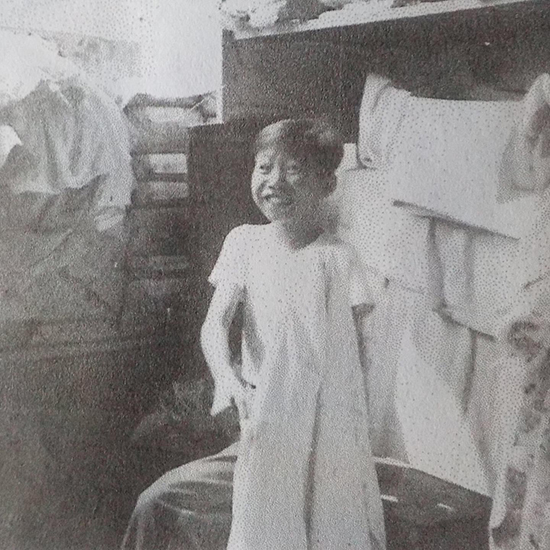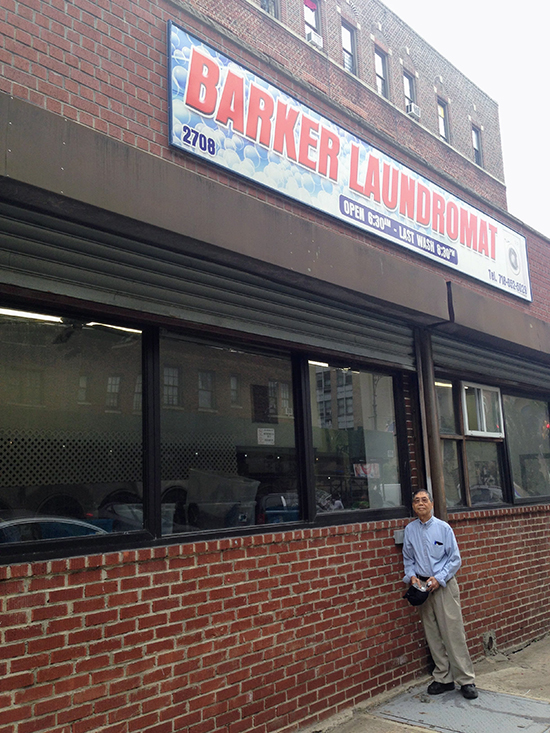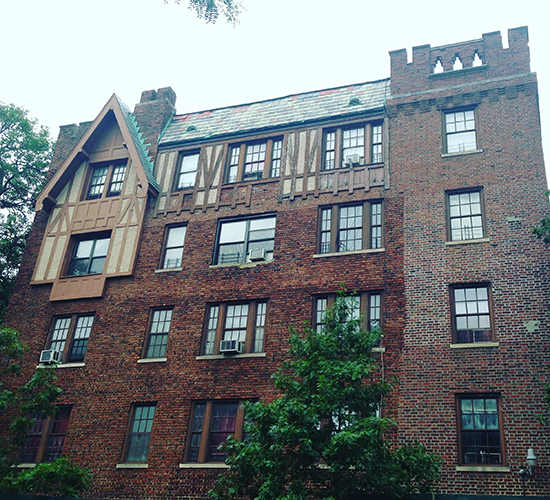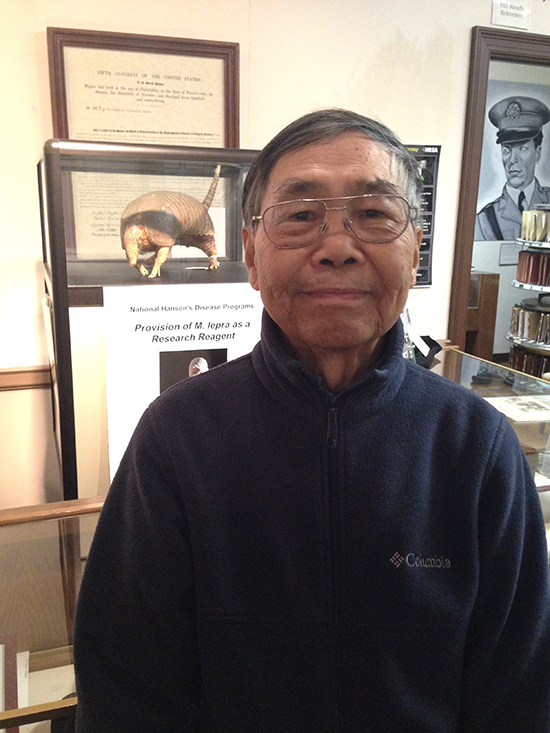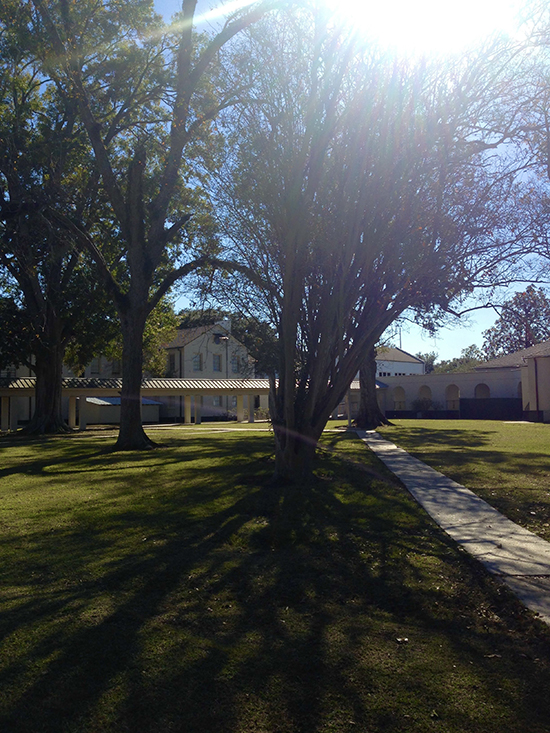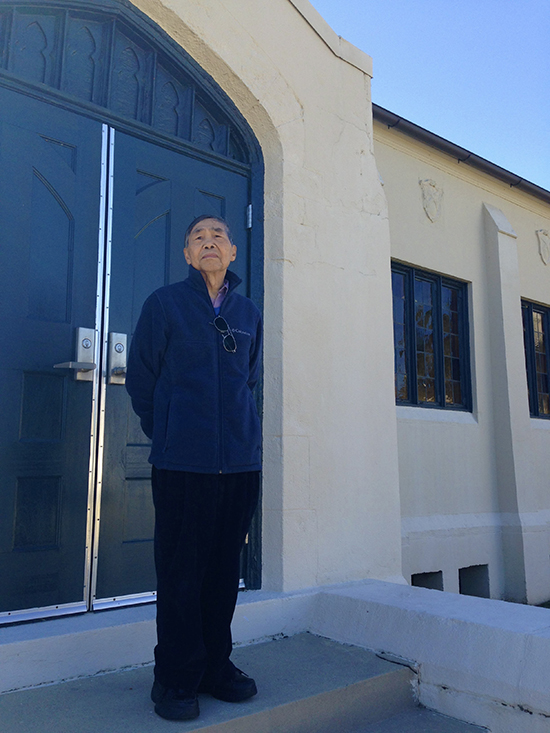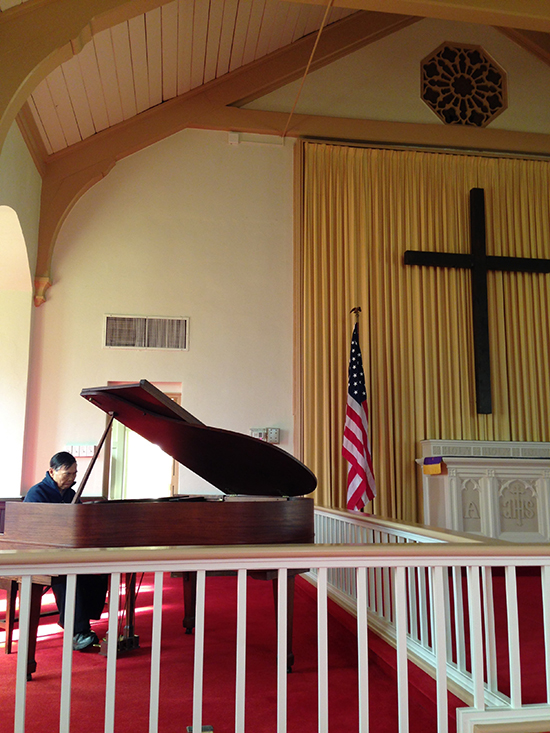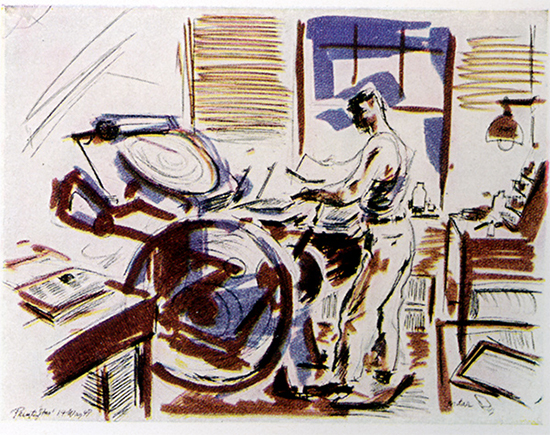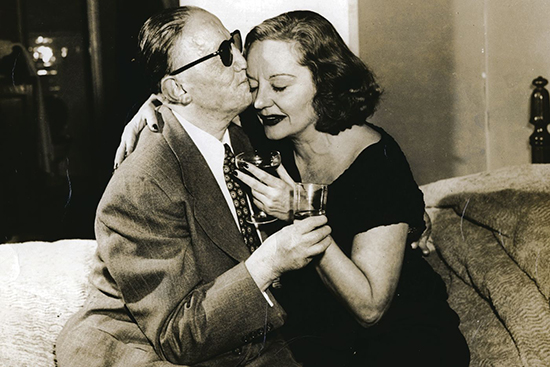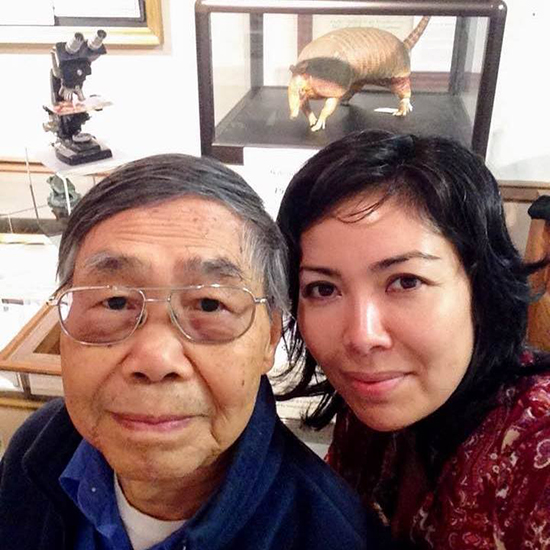OFF-TOPIC (52)
By:
August 17, 2023
Off-Topic brings you over-the-transom, on-tangent essays, dialogues and subjective scholarship on an occasional, impulsive basis. For this summer of blazing heat and shadowed history, we travel to an almost forgotten clearing in the past, with an uncommon truthteller who can interpret what does and doesn’t meet the eye…
We are closed books to each other, so we turn to fiction to open up the truth about ourselves. The stories we tell, and the self that others read from us, are reconciled by a true listener, and in her debut novel King of the Armadillos, Wendy Chin-Tanner takes notes with the utmost care.
The remembered archive of our life is the only thing we get to leave it with, or leave to others, and can be lost long before we’re even gone. Armadillos is an act of rescue, bringing unknown personalities and entire overlooked chapters of history into the light.
Victor Chin is a teenage boy taken from his home and family in the Bronx to the real-life Carville complex, a quarantine site deep in Louisiana that the US Government long maintained for patients with Hansen’s Disease (archaically known as leprosy). In 1954, Carville is just one link in a chain of truths closed off; beyond its walls and razor-wired fence lies the segregated South, and within lies the disease’s stigma and the doubly hidden identities of its bearers — many take on pseudonyms to protect their outside families’ reputations. And many hold in traumatic memories, like Victor’s of hiding with his mother, Mei Wan, from invading armies in his native China, and then the wrenching separation from her when he left.
This imposed interior life runs in the family, as with most people in the cautious, conformist America of the 1950s. Victor’s dad Sam is a hemisphere distant from his wife, and emotionally often just as far away from Ruth, his Jewish-American lover. They are bonded, and divided, by the weight on his shoulders to provide for his family, and the gravitational resistance she encounters in being an independent woman responsible for herself. Their motivating hardships are mostly unexplained to each other, while their romance, in racist midcentury America, is fugitive in its outward expression. Victor’s older brother Henry is the toughguy of the two, hardened in ways he feels he must appear to be, and determined to shield the truth of his dad’s affair and Victor’s illness from a mom much stronger than anyone understands.
They are all operating within yet another layer of reality: Chin-Tanner’s father Walter was an actual patient at Carville for almost a decade, and his and many other family stories form the kernel of Chin-Tanner’s imaginative reinhabitation of a vastly different world, which has many survivors but few chroniclers.
Victor’s story constitutes the novel’s core, but every character revolves around the others, portrayed in their own vivid and unreliable point of view. His awakening as truly his own person, right after a diagnosis that feels like the early end of his life, is an odyssey as profound as the one his family took across the ocean. His gift for music emerges; he is exposed to Carville’s population of every class and race in an oasis of suspended time and prophetic (though imperfect) social equality; he fast-forwards through the heartbreaks of both his era and everyone’s adolescence; and, with excruciating determination, becomes one of the first people on Earth to benefit from the treatments that now make his condition a very curable one.
We who can see the world as it has changed since the times shown in the novel know how much easier some of the circumstances its characters face will eventually become, and also know which scourges will persist and recur. What we don’t often encounter is the picture, the texture, the impressions and the vibrant immediacy of an era in its personalities and places, its limitations and frequent joys and comedy, of the type that Chin-Tanner’s vision delivers.
The historical perspective, empathy across cultures and centuries, vivid sensory insight and unremitting though forgiving honesty, all entwined with the book’s sheer riveting romance, family tragedy, humble epic sweep, and coming-of-age storytelling, is phenomenal. It’s been said that when an elder dies, it’s like an entire library has burned down; speaking to our time and rekindling an urgent voice from the past that forms us, Wendy Chin-Tanner has reached high and deep among the shelves of family and community experience, and retrieved a masterwork.
I shared a zoom with the author as she set off on a book tour through the very territory her story traces, from her dad’s youthful NYC home to the far-off landscape he finished growing up in…
HILOBROW: Stories untold, kept to oneself, hidden away, erased, are such a theme of this book, I was curious how readily this story came to you, via your dad. Did you grow up with him being open about this, or was it something you had to extract?
CHIN-TANNER: There was a kind of duality happening throughout my childhood. Where it was of course a taboo subject outside of our home, but within our home, my dad was really open with me about it. I’m an only child, I was an inquisitive child as I am an inquisitive adult, and my dad is very chatty [smiles], so he didn’t really have any compunction about talking about it quite openly with me when I was growing up. As long as I knew to keep it under wraps, which I did.
For me, Carville has been a kind of, in the Rushdie sense, an imaginary homeland. I’ve been imagining it since I was a little girl. And so many of [my dad’s] stories were set at Carville. Because he spent nine years there; Victor was only there for two years, my dad was there from 1954 to 1963. His most formative years; he became a man there, he became an adult. So many of his belief systems, many of his character traits were formed and/or solidified there. And in that I think I come from Carville culture, because he parented from that place. He would talk very openly about his experiences there, as anyone would share stories about their adolescence and young adulthood. So for me it was like Oz, or like Narnia, this magical and mythological place.
And the way he described it was very much as it is; it’s hauntingly beautiful. 450 acres of gorgeous grounds, on the banks of the Mississippi River, in a disused plantation; it was formerly a sugar plantation. The 1950s, when my dad was there, that was the heyday of Carville; it had up to 500 patients at any given time, so it was more like a little town than an institution. And also, a kind of patient-led revolution had already occurred by that time, so it was very sort of progressive, and radical, and patient-run, and actually very diverse also. As a result of that it was this sort of progressive oasis in a very conservative, racist place. There was a lot of culture, and intellectualism, which my dad certainly benefitted from. And a sense of political engagement; community and political engagement. So I think my dad’s activism was also rooted in his experience there. The character of Herb, Herb Klein in the book, was based on a real person named Stanley Stein. [Stein, a lifetime resident of Carville blinded by the disease long before cures were developed, ran a publication, The STAR, from inside the complex which drew worldwide attention and celebrity allies to the cause of destigmatizing Hansen’s and disability in general.] He was not as much of a mentor to my dad as Herb was to Victor, but my dad did work at his magazine, and he was a reader for him, so they did have a lot of engagement. And they did meet when they shared a room in the infirmary; so there are snippets of that relationship that are real.
HILOBROW: I wondered of course, since whenever anyone reads a historical novel…well, this is more a genre unto itself, like “creative biography”…
CHIN-TANNER: It’s definitely fiction, it’s been taken so far away from the biographical; it’s rooted in biographical and historical research, but I really had to take the leap into fiction in order to make it come to life. Many of the characters are entirely made up. I sort of think of the real as a scaffolding or a skeleton for the story. Around those or within those are built narratives that are entirely imaginary.
HILOBROW: It’s amazing that you put it that way, because I really did get the sense of a stage-set — in a good way. I was always influenced by hearing that for Merry Christmas, Mr. Laurence Nagisa Ōshima had had the entire prison-camp built, but only ever shot on a fraction of it, since he wanted its presence, its context to be felt. He wanted the canvas there to take details from. For this book, you went to great lengths to build the whole texture of its world so that then you could zero in on any particular moment. Even incidental points, like when Victor has a painful recurring memory he likens to a skipping record — not just surface period details, but the whole frame of reference from which people would have viewed things.
CHIN-TANNER: Also, he’s 16, 17, so I had to really think through his interiority, and his internal monologues.
HILOBROW: Those are remarkably observed. And it’s a perfect device for making a reader be surrounded by the story, rather than a spectator of the story. The emotional recall, not just for very passing sensations, moods, impressions, but ones we often try to forget, is really remarkable. What is your method for getting into those moments that can go by in a flash, and reinhabiting those feelings that can be painful to exhume?
CHIN-TANNER: Around Victor in particular, or…?
HILOBROW: Around all the characters; Victor may be the focal point but everybody has this past hardship welling back to the surface.
CHIN-TANNER: Overall, my general method for hearing the characters and getting into their heads is almost a method acting exercise. Or, one could think of it as Jungian dream interpretation; I feel like, in many ways, the writer finds pieces of themselves in all of their characters. And that’s what makes it feel authentic; if you don’t feel it, the reader’s not going to feel it.
But the hardest character to get into was Victor. And that is what really made me have to jump off the cliff into fiction. Initially I wasn’t sure, after gathering all of my research — although I also gathered research while I was writing; it had many stages — but after I did my preliminary research, because I just had so much, I had an overabundance really, I thought that maybe I should do [the book] as creative nonfiction. Because I had never written a novel before. I’d never even written a short story before. I knew how to write a poem, I knew how to write a sociology paper, I knew how to write maybe some literary criticism, maybe a little bit of cultural criticism? But apart from that, it was quite new to me.
So I think initially I wanted to lean on something that felt more familiar. And very quickly I realized that was not gonna work. I think in some ways the overabundance of information and research, but also my closeness to my dad, became a hindrance, became a barrier to my being able to really get into this character, who had to be very separate from him in the end. And the way I discovered that and discovered a way in, was when I was confronted with the obstacle of how to portray his musical awakening, and also how he experiences music in general. I’m not a musician! My dad taught me how to play the piano and sing when I was a kid, but I’m certainly not a musician. The only way to get into that experience was to try a writing exercise where I sort of transposed or translated my own relationship with writing and my own discovery of poetry and awakening as a young writer, to Victor’s. So, I made him me, and that’s the only way it could work. And I had to make him as messy, and flawed and complicated as I am myself. Then he became alive.
HILOBROW: I’m particularly fascinated by the transposition — musical pun intended I guess — of your creative process as a writer to his explorations and awakenings as a musician, because I thought repeatedly, as he develops his talents in the book, that it was the best sustained description of creativity that I’ve read. That kind of figure/ground fade between…like when it says he’s both wading into the sea and one with it, hearing the notes and making them, that was such a great description…almost the Rosetta Stone of where creativity comes from, the prima materia of creation before it differentiates into images, sounds, words, motions, etc. So I can see how you could have transformed your practice into his (though it’s a remarkable and rare achievement to have pulled it off!).
CHIN-TANNER: I think what I was describing was flow state, in a generalized form. The state of flow which is the well from which creativity comes. But then, I think I was able to find my way into the specificities of the music. Because as you know, as a poet yourself, poetry can be very musical. And for me, it comes to me as the music of the words, that’s how I think of it. So that was a less difficult translation process.
HILOBROW: That’s the avenue into it, I understand. And I wonder how much of it was form-follows-function, in that…repeatedly, particularly through Victor’s eyes, we get this impression that he has a kind of synesthesia in the way he looks at the world. And it seemed to me you were bringing a similar gift to bear in the way the whole book is written, talking about “the birds piercing the skin of his dream,” or “the clouds releasing their burden of rain,” etc. I don’t know if that’s conscious, or, part of your “method writing,” to give yourself over to that kind of open association?
CHIN-TANNER: Totally. And I guess I can’t separate my writing style as a poet, per se, from my writing style in prose. I scaffolded off of poetry in order to teach myself how to write fiction. Early on, I was terrified of the idea of writing fiction, terrified of the idea of chapters, and even the structure of paragraphs; it freaked me out and stifled me. So I kind of tricked myself by pretending that I was writing prose poems, essentially. So I guess in part the lyricism comes from that. I would collect all of these vignettes, and think of them as pieces of the quilt, that I later was able to lay out and then stitch together and fill in the gaps; fill it in with a structure, the structure that is necessary for narratives in fiction.
HILOBROW: I know that whenever I write any longer-form narrative, I write out of sequence. It’s almost like tectonic plates eventually moving together to form something coherent [smiles].
CHIN-TANNER: Totally, and different people have entirely different methods; I think you and I are very much on the same page in that sense, and when I think back to college and graduate school I would write my papers and dissertations and things in that way as well; that associative thinking would lead me to that. Whereas other people — Tyler, for example, [graphic novelist and publisher Tyler Chin-Tanner, Wendy’s husband] will have a complete outline first—
HILOBROW: —Boggles my mind.
CHIN-TANNER: —It boggles my mind too, how does that happen?! [laughter]
HILOBROW: The associativity extends to the way you construct “backstory,” to use a word I’ve never liked; I was amazed at how much exposition is worked into this book so completely unintrusively, and it’s through, it seems to me, the associativeness of memory. We’re not told a given character’s whole background when we first see them, but then something will trigger a memory of the past they’re carrying around inside them, and it makes total sense to why they are feeling or responding to something in the present. It feels true to the way we actually experience time, as a mosaic of references we drift between, not just reactions to what’s “really” going on in the moment. And little by little the pieces of these characters’ personalities come into place, but only when we need to know it — and often when we’re least expecting it. I don’t know if that came out of the way you would write out of sequence?
CHIN-TANNER: I think that came out of two things, really. Firstly, yes, I did write those parts out of sequence. I would have these pieces of backstory that I knew needed to go somewhere, but I wasn’t sure where yet. Eventually, in my editorial process, I found where those pieces went. And I cut so much; I’ve jettisoned more than a hundred pages, and this book took 20 drafts to write. Literally two-zero.
The other part of that explanation comes from the fact that I’m writing in close third[-person]. We have four POVs, Victor’s, Sam’s, Ruth’s and Henry’s, and because all of those are written in close third, I think it does lend itself to that sort of associative process — we don’t have a [single] bird’s-eye-view narrative, we have a narrative that comes from the person’s interiority, the person through whom we are seeing. So I wanted to replicate that kind of cognitive process.
HILOBROW: Are we all composites? Is our sense of self only part of the story?
CHIN-TANNER: I think so!
HILOBROW: That’s expressed very well in the book. And it’s funny…right at the end, Victor is almost seeing beyond that fourth wall when he’s wondering if Ruth remembers a certain time in his childhood, and then, crucially, whether “she remember[s] it in the same way.” It seems he’s the only character perceiving things in that manner, even though he has his share of moments when he seriously doesn’t know how he sounds. [laughter]
CHIN-TANNER: That was a really important moment to me, to demonstrate in that final scene…to demonstrate Victor’s transformation. That part of his process of transforming, in this coming-of-age novel, was to go from being a child to being a man. So part of that maturity that he achieves, as he’s leaving Carville, that comes along with differentiation. In that moment he demonstrates an ability to differentiate from Ruth, and he has suddenly a kind of sense of the meta, and the sense that what he’s thinking may not be what other people are thinking, and how two people experience the same event can be diametrically opposed.
HILOBROW: I take it, from the very fact that he would be open about this story from your childhood onward, that your dad is that kind of more open personality that Victor is too. Was he raised by people who were not?
CHIN-TANNER: He totally was raised by people who were not. And the kind of family separation story that I tell in the book was true in his family, as in so many other Chinese-American families of that generation. That’s one of the reasons why I wanted to lean into that in the book, because as a consequence of the Exclusion laws and the various vicissitudes of anti-Asian immigration legislation over the decades, many many many Chinese-American families had the same kind of family separation for generations. In my family I think it happened in three consecutive generations. The family that I grew up in was the end of that.
HILOBROW: It’s interesting you say that that was the end of it; something I thought of a few times while reading your book was the part in Maus where Artie’s shrink says to him that part of the reason for the frictions between him and his dad is that “Your dad realizes that you are the real survivor.” And in some ways it’s almost like Victor is the real escape-er…like, the first one in his family who actually made it to America.
CHIN-TANNER: Completely. And to answer your previous question, yes, my dad is that sort of open personality, although not as open as Victor, but in comparison to his siblings, yes; and he is [like Victor] the second-born son in his family.
HILOBROW: Did you tell me that you are adopted?
CHIN-TANNER: No — however, well Tyler is adopted, and also, my grandfather was adopted. So adoption is a big part of both of our family histories. And actually it’s very sad; my grandfather spent many many years, to the end of his life, placing ads in the Hong Kong papers, looking for his lost siblings and he never found them.
HILOBROW: There is a concise, matter-of-fact horror with which you describe scenes like hiding from invading Japanese soldiers; it’s remarkable the unflinching way that you portray things like that — but also, the whole context, not just of the murderous racism of Louisiana in the mid-1950s, but that part that’s so pervasive it’s invisible; I could’ve fallen off my chair when Dr. Behr is blithely telling Victor about how he can surgically “fix” his Asian eyes and then he starts to absentmindedly whistle “Happy Talk” [merry, racist ditty from the musical South Pacific]. What was it like placing yourself, time-traveling to those days — or was it maybe not too hard at all, since there are so many things about this book that feel right on time, not a period piece.
CHIN-TANNER: Which do you mean?
HILOBROW: The close-focus chronicle of somebody in quarantine, the stigma and paranoia that surrounds that from people who aren’t experiencing it, the spike in anti-Asian hate crime, and the vicissitudes of people trying to come here and be Americans and being rejected.
CHIN-TANNER: I did, very explicitly, want to speak to those issues. But also, history is, very sadly, cyclical. If we look [back] for a hundred years, two hundred years, we see these circular patterns. We’re in a very dark part of the circle currently. But, I owe you an answer to what we were saying before…?
HILOBROW: I just was saying what was it like, and what were the difficulties and methods of placing yourself in those times.
CHIN-TANNER: In some ways it was cathartic, and in some ways it was a way to process it in a quasi-escapist way. In terms of my method for getting there, I just kind of fed the creative engine with as much period gas as possible. So I watched tons of films set in that period, and television series…Mad Men was actually really helpful, both because of its modernist exposition of character, the way that it also gets into, as much as that medium can, close third. Also just to get period clothing and language right. Anachronism was really important for me to avoid…that was a little bit tricky, actually. Some of my initial drafts were perhaps too precise? In terms of using language that is now anachronistic — my editor was explaining how, in historical fiction, there must be some sort of modern license, in terms of bridging that gap between the language of the period in which you are writing, and the language of now. If some of the language you are using is obsolete now, that can pull the reader out of the moment, out of the narrative, out of the character. There are some moments in dialogue that are probably too modern.
HILOBROW: It’s good to have those ways in, though. Because, as you say, it can seem over-researched otherwise, like it’s just locked into its period and doesn’t speak to ours…and if as the saying goes, the past is another country, then transliteration of meaning, not just literal translation [is called for]. Even in stories that go much farther back in time, I find I’m not distracted by contemporary curses, slang, etc.; not the same words and not the same idioms as would be used by these characters from ancient Judea or Medieval Scandinavia, but we’re more or less getting the equivalent sense of how they would be conversing.
CHIN-TANNER: I think there can be more license perhaps in writing around periods that we don’t have much memory of. The 1950s, we’re too familiar with the language of that era, and it would be easy for it to become cheesy — “peachy keen!”, you know. I tried to avoid some of that terminology, I didn’t want to write Back to the Future. But as Gen X people our parents all lived through the war, and it was such an important moment not just in history but in their lives, so formative to our family structures, that writing about the consequences of WWII and the period right afterwards felt pretty natural in a sense. Because my parents spoke about it all the time when I was growing up.
HILOBROW: It fascinates me, being true to both past times, and to one’s own time — which can almost be harder; we’re still somewhat stratified by generation, so sometimes it can be harder to catch the sound of the present. But I’m particularly impressed by people who can catch the sound of various pasts, and I was wondering…I’m sure there’s at least ten years between us, but in terms of the ages of our parents we seem to have the same bank of references. And I wondered how much of that do you need, how few degrees of separation do you need to write truthfully about the past.
CHIN-TANNER: I do think that proximity has quite a lot to do with it, because that proximity, over a long period of time, allows for the things that I was trying to write about to be embodied, and deeply felt, and layered.
HILOBROW: I wonder if resonance is important as well…like a current war allowing a writer to imaginatively inhabit earlier conflicts…like closing a circle, folding those points together. Or maybe that empathy is illusory, and it’s just overlaying our experience onto a different reality…
CHIN-TANNER: I think I was writing from the idea that people are people, no matter when and no matter where. We can be in a 17th century French castle, or we can be in a leprosarium in Carville, Louisiana in the 1950s. But people have all the same hardware from which they develop their personalities, they all have the same wants and needs and foibles. They all fall in love, and have sex, and tell lies, and make mistakes, and have to deal with the consequences of their mistakes.
But speaking to that piece of nuance and layers, I wanted to talk about the nuances and layers around separation. Separation and ostracism on multiple levels. There is the obvious, there is the concrete, around the fact that [Victor] was separated from his mother, and subsequently he was separated from society into Carville, and the idea of the fence as representative of the liminal; there’s that. But there’s also internal separations; compartmentalization, dissociation. I think dissociation is actually a big theme in this book, that I wanted to connect with these other forms of separation. So there’s having it be done to you, versus doing it to yourself.
HILOBROW: We’ve spoken a lot about what made you decide to tell this story; what made you embark on a novel specifically? Did you think, “I haven’t tried this yet so it’s a new challenge,” or, “I should be writing one, cuz I’ve written in other forms,” or “I have this burning story to tell and a novel is the best vessel for it,” or—?
CHIN-TANNER: I think I evaded writing a novel for a long time, actually. The reason I wound up doing it was because I realized that was the only way I could accomplish telling the story that I needed to tell. It could have been a biography or a history, but that wasn’t the story I wanted to tell; perhaps it was coming out of my subconscious, but I needed to create these characters.
I think my first inkling that it had to be a novel was when I started writing a few scenes around Sam and Ruth, and how much of an emotional charge they had for me, and how alive they felt, and how much their relationship dynamic felt real to me. And I was just deeply interested and intrigued by them as people, and I wanted to delve into, how would a relationship like this work, and how would it occur and how would it grow over the course of ten years. It’s not just about falling in love, but staying in love, and all the obstacles they encounter; how do they navigate them, and why — why would Ruth be interested in a man like him, and by that I mean a man who is closed off, and filled with toxic masculinity in many ways; what would compel them to not just find each other but to stay with each other for so long, and to want to have this future together. So in imagining that, that was my first real clue that…okay, this ain’t gonna be creative nonfiction!
I thought maybe I would just write that as a side thing and throw it away, but it became so central to my imaginative process around the book that I felt like I had to include it, and so… that’s fiction [laughs]. I myself was in denial for quite a while that it needed to be fiction, but I had some really good advice from writer friends of mine who basically said that the story is gonna tell you what it needs to be, and you need to trust the story.
HILOBROW: Was there family history behind this?
CHIN-TANNER: My grandfather was rumored to have been involved with a Jewish woman, who lived across the street from his laundry — but that was all I knew about her. There were whispers about that relationship. But I knew that they had been together for years, and I knew that she disappeared. My father went into Carville in 1954; by the time he was out in 1963, this woman had disappeared, and my grandmother was in the States; my grandmother had reunited with my grandfather — unhappily. So that was intriguing to me, fascinating to me, and I wanted to understand how could such a thing happen, what might have happened behind the scenes.
HILOBROW: Sometimes the pearl only needs that much of a grain of sand!
CHIN-TANNER: Something that’s incredibly moving to me was this moment where my dad and I went back to the neighborhood where he grew up, on Barker Avenue, and the site of the laundry — it’s now a laundromat, but it’s still there; and the building where that woman lived, where Ruth lives, is still across the street. That idea is very moving to me, that these people are long gone, but the artifacts of their love story still remain.
HILOBROW: A scene that killed me was when he puts the lilacs in the window, so she can see them across the street. And my mom’s favorite flowers were lilacs.
CHIN-TANNER: Oh wow, Tyler’s grandmother’s favorite flowers were lilacs, so that’s where that came from!
HILOBROW: In terms of imagined stories, when you said there were certain characters who were completely created…the only precedent that comes to my mind is The Known World by Edward P. Jones, in the way that even [with] characters who are encountered in passing, the brush with them kind of lifts off into your own empathetic imagination, and we have these perfect, paragraph-long life stories. I’m thinking of Miss Iantha…I was curious what the thought process (if it’s conscious) is, in having those kinds of…it’s almost like a sci-fi movie telepath, where we’re overhearing the inner voice of Miss Iantha; we only have to meet her for a second to know her whole story.
CHIN-TANNER: That process was twofold. I can speak to my internal process, and the methodological process of making it happen. My sense of how the community was in Carville at the time — of course it was entirely isolated, circumscribed, and it was incredibly diverse, geographically, racially, everything — and because many people were there for many many years, some of whom were there for life, because of that, there was the sense of “it takes a village”; and especially, for the young people there, there was a lot of community parenting that happened through the older folks who were there. And I think it was really like living in a very small village, where nobody could be a recluse. So these relationships were very important and very present. Even the passing relationships weren’t something that was easily pushed aside. There wasn’t the kind of atomization that we have in New York City, or in our contemporary culture; there was just an enormous amount of intermingling.
But methodologically, I had an enormous amount of access to the archives in the National Hansen’s Disease Program Museum, which is commonly known as the Carville Museum — where there were many many oral histories. So I read as many of them as I could, just to get the voices of the people who were there at the time. And to get a sense of, a kind of cross-section of who was there at the time, how they interacted with each other. So that’s where a lot of these characters come from; they’re kind of composites of the oral histories, and also from stories my dad would tell me. Miss Iantha is a composite of a couple of things he told me about a woman who was really into his music, an older woman from Jamaica; it was a combination of his narrative and a couple of oral histories that I found.
HILOBROW: Is the site still a hospital, or is it more of a historic landmark now?
CHIN-TANNER: It’s a really interesting place. It’s relatively untouched, and unchanged, aesthetically. But it has gone through some transformations. The federal government allowed patients to live there for as long as they wanted, so the last of them moved out in [2015], actually pretty late in the game. We went to visit in 2016; so the last patients had just left. But it has gone through several incarnations after the Carville era. At one point it was a prison, a minimum-security prison for white collar criminals, and somebody wrote a memoir about that, which by the way the Carville folks find really exploitive and gross, in terms of the way he described some of the patients who were still there, like a circus sideshow freak kind of sense, or trauma-porn or whatever.
HILOBROW: Whereas he was only there for being a criminal!
CHIN-TANNER: Yeah, totally. But I think the memoir was written through the lens of, like, “Being in this place transformed me, because of these lepers that I met,” yadda yadda yadda.
HILOBROW: I might note that Jesus didn’t have to be arrested to commune with the “lepers”…
CHIN-TANNER: Exactly. And currently, it’s being used by the military. For example, what was the infirmary has been converted into military conference housing, so quite amazingly, when my dad and I and the rest of the family went, we stayed there. So we kind of replicated my dad’s journey in a sense. Because that was the first place he went. So that was wild. And I think a portion of it is also a center for…not quite a juvenile detention center, but a center for “troubled youth.” And the fence is still there…
HILOBROW: With the hole?
CHIN-TANNER: Yes! They kept the hole, I think for historical purposes. American Horror Story wanted to film there at one point, Elizabeth, the curator at the museum tells me.
HILOBROW: Do you have a particular affinity for these kinds of ghost facilities and bygone microcosmic communities, or is it mostly the family connection to this particular place?
CHIN-TANNER: Mostly the connection to that particular place because as I said earlier, it felt like a kind of homeland. It’s interesting, when we were there, there were a still a few people, just a handful of people around who had been affiliated with Carville the institution. And one of the people that I met in the cafeteria, which is still open and running, his name is Anthony, and he’s about our age, and he’s a maintenance man at Carville. And his father was a maintenance man at Carville, and his grandfather was also a maintenance man at Carville. So he’s this local, Cajun guy, who I’m pretty sure does not have anything beyond a high school education; he still lives in the area, probably not well-traveled I’m guessing. And yet, I sat down to lunch with him, and he took me on a tour and everything…because he had grown up in and around the institution, he had been exposed to all of these people from all over the country and all walks of life, and he was exposed to this sort-of radical progressive community. So his inner world was really big, and I had this sense of kinship with him, like, oh, huh, y’know we were formed by the same things; it’s almost like he was a long-lost cousin. Something about him was just so familiar; it was clear that he was raised with Carville values, in the same way that I was.
HILOBROW: Like a living library of the experience that you’ve heard about all your life.
CHIN-TANNER: Totally, and at one point when we went into the chapel, Union Chapel, where my dad had had his lessons — and he got a chance to play on the first piano he ever touched! — Anthony was there with us. And we went into the vestry at one point and there were still all these bibles there, and I picked one up and I was like, Oh shit, we had that at home! I grew up with one of those, in Brooklyn. Because my dad spent so much time in that church; he went to services, he played at the services and kind of was indoctrinated eventually, though he [later] got out. And I said “I think we have this in our house,” and Anthony was like, “Oh we have it there too, I grew up with this too.” And he then preceded to tell me other artifacts from Carville that he’d grown up with, and we had a few as well. For example, my dad kept all of his sheet music from Carville, so I grew up learning on them, and the Christmas carols we would sing were from Carville. His music teacher’s notes were still in the margins, and these books are still there at my parents’ house. A living history.
HILOBROW: In the book, Victor and his mom talk about the invisible thread they hold onto between them by being able to picture where each other is, and this is a more materialized version of that; you have all these talismans from your own dad’s past.
CHIN-TANNER: I think I also wanted China to be somewhat of an imaginary homeland for Victor, because he was so young when he left. There’s another bit of transposition.
HILOBROW: In terms of “imaginary” spaces, how does your dad or anyone else you may have talked with who spent so much time at Carville…do they have a view of if it was a reality that is achievable on a larger scale, a society-wide scale? You talk about it being an oasis, and as we were talking I realized it’s not for nothin’ that Ruth at one point calls Victor “our own Huckleberry Finn” since critics remark about how the implication of that book is that Huck and Jim can be friends as long as they’re on a raft in the middle of this tabula rasa of the river, but nowhere else. In the same way that people are integrated within Carville and if you go down the road from it you might get lynched. Did that give the patients a sense of what’s possible, or maybe give your dad a sense that he’d been fooled in some ways? Or somewhere in-between — like he’s gotten a glimpse of what could be achievable but so far we haven’t managed it as a society.
CHIN-TANNER: I think a bit of both, and I think there’s been a kind of linear move, unfortunately, towards skepticism. As a young man my dad was incredibly idealistic, and he…marched for civil rights; he protested the Vietnam War; he went with me to protest against the Iraq War and various other things — he was even down at Occupy Wall St. But, he has seen this terrible slide backwards. And I think it’s embittered him a little bit. But what was interesting about the Carville community, on the one hand it was very isolated and closed, but on the other hand … Stanley Stein — in the book, he was very close friends with [legendary actress and queer icon] Tallulah Bankhead, and that’s true; Stanley Stein was besties with Tallulah Bankhead, it was wild — he just had this incredible charisma, and larger than life personality, and in spite of his disabilities he was able to accomplish an enormous amount; as a publisher, as a journalist — but also as an advocate. So at one point, the year before my dad got there was the final year of Doctor Johansen’s tenure as the Medical Officer in Charge. He was very progressive himself, and he was onboard with the idea of making Carville less of an institution, less of a hospital and more of a community.
After he retired, they got in this new guy who everybody hated — Doctor Morton in the book, in real life he was Doctor Gordon. So…he was a dick, even more than in the book; for example, he was incredibly racist, and he tried to get all the patients who had come from the Caribbean to leave, even the ones who were not done with their treatment; he tried to institute all kids of draconian, anti-communitarian rules and regulations, like he tried to do away with a lot of the socializing, he put prohibitions on dancing, and like in the book, he prohibited the visitation rights that patients had earned.
So eventually Stanley and the rest of the patients formed the Patients’ Federation, and because of his connections, he was able to get a congressman onboard, and go to Washington to speak on his behalf; they also hired a lawyer, and they kicked the guy out! Within three years they managed to kick him out. [Stanley] also really understood the power of publicity. Because through his Hollywood connections and through his political and journalistic connections he was able to grow the circulation of The STAR to 92,000 subscribers, internationally; it became this important institution of its own. So he had this mouthpiece. He had an enormous amount of power and he understood how to use it. [Even later,] my dad remembers participating in sit-ins…they really used the playbook of the civil rights movement. They had sit-ins, they would go on strike, they would have these mass protests and my dad remembers making signs and marching. The HIV/AIDS movement was actually modeled after, explicitly, Carville’s movement.
HILOBROW: That’s amazing, and I was an ACT-UP-er in college and never heard of that (or of Carville)!
CHIN-TANNER: It was exciting for him.
HILOBROW: That aspect of life at Carville was alluded to on the back-cover copy, but it doesn’t play a very visible role in the book. What made you decide that, or was it just too many stories to tell in one book?
CHIN-TANNER: That was a bit of a developmental editing decision; I did want to get into it more, but with my editor we decided it was too much of a digression from the core of the story, which is this family.
HILOBROW: That makes sense, and there’s certainly implications [of it], with the way that Herb chafes at the restrictions, though it seems he’s a holdout from New Deal-era values whom life will only get harder for. It’s nice to know that in real life he tilted at the windmill and won!
CHIN-TANNER: Yeah! In real life, he was a closeted gay man…
HILOBROW: Which you show perceptively through the eyes of the time — as I was reading, I wondered if even Victor, as sensitive as he is, ever gets that Herb and Fernando [his implied lover] are gay.
CHIN-TANNER: I think he does get it, and it was important for me to convey that actually, Herb and Fernando are the only healthy couple in the book! They do a lot of parenting of Victor. It was important to me to give Herb a real kind of love story. I didn’t want this sad narrative around his personal life — even though it was probably true to life, to an extent. But I didn’t want that to permeate this narrative of the one gay couple that I’m portraying.
HILOBROW: So was there a Fernando in real life?
CHIN-TANNER: I don’t know. Oh, actually — there may have been. What my dad recalls, because he did go to Stanley’s cottage to read to him from time to time, and also just to hang out, there was a younger man who lived there with him; my dad doesn’t remember his name, I don’t think he featured too prominently in those visits, but there was a younger man who, the party line was that he was there to help Stanley because he had progressed so much in his disabilities, in his blindness, etc.; but you know, he was probably his partner, I would assume. All the other people in the cottages around them were married folks. So, so were they!
HILOBROW: It’s nice when you can do something to redeem that in retrospect.
CHIN-TANNER: Exactly, I wanted to redeem that.
HILOBROW: There’s a recurring theme of prophecy and retribution in the characters’ minds…from the most superstitious (old beliefs that some kind of “sin” leads to leprosy) to…various time-bombs that people set for themselves, like the way Sam felt he had to be armored in a certain way, and by the time he’s ready to be happy, Ruth doesn’t believe he’s capable of it.
CHIN-TANNER: He’s a very tragic figure to me; this example of too little too late that I find very heartbreaking. I think I hold the idea of redemption, and self-improvement, and personal growth in very high esteem. So the idea of someone who comes from a deeply traumatized background, someone who spends the majority of his life not working on himself, who suddenly has this awakening, is very very moving to me. And on top of that, the failure to accomplish it. He does this incredible thing for which he is not rewarded, because the world is not fair. And that’s just deeply moving to me.
Photos (top to bottom): Book cover; vintage arial view of the Carville campus (photo: Johnny Harmon); Christmas at Carville (Walter Chin, kneeling at center-right; photo: Bill Weber); a patient private room; painting of the grounds by visiting artist Howard Baer, 1947; this stage is big enough for all of us (Walter, standing at right; photo: Weber); the campus’ covered walkways, 2016 (photo by Wendy); Walter on keys, 1950s (Weber); a midcentury sister-scientist at work; Walter “victor”ious (Weber); boyz in the Bronx (Walter at right, with brother Charlie and uncle Johnny); high-modern view of patients mass-mailing The STAR by visiting artist Frede Vidar, 1947; the real-life Sam, hotter than fiction; kid Walter in more carefree days at his dad’s laundry; back on the block in the 2010s; real-life Ruth’s house still standing; iconic specimen of an armadillo, the only other animal that gets Hansen’s, pictured with its King at the Carville Museum (photo by Wendy); the grounds as he left them, 2016 (photo by Wendy); Walter returns to the church where he learned to play (photo by Wendy); the encore of a lifetime (photo by Wendy); The STAR’s press room, by Baer; Stanley & Tallulah (photo: Liveright); father and author where it all began (photo by Wendy).
MORE POSTS by ADAM McGOVERN: OFF-TOPIC (2019–2024 monthly) | textshow (2018 quarterly) | PANEL ZERO (comics-related Q&As, 2018 monthly) | THIS: (2016–2017 weekly) | PEOPLE YOU MEET IN HELL, a 5-part series about characters in McGovern’s and Paolo Leandri’s comic Nightworld | Two IDORU JONES comics by McGovern and Paolo Leandri | BOWIEOLOGY: Celebrating 50 years of Bowie | ODD ABSURDUM: How Felix invented the 21st century self | KOJAK YOUR ENTHUSIASM: FAWLTY TOWERS | KICK YOUR ENTHUSIASM: JACKIE McGEE | NERD YOUR ENTHUSIASM: JOAN SEMMEL | SWERVE YOUR ENTHUSIASM: INTRO and THE LEON SUITES | FIVE-O YOUR ENTHUSIASM: JULIA | FERB YOUR ENTHUSIASM: KIMBA THE WHITE LION | CARBONA YOUR ENTHUSIASM: WASHINGTON BULLETS | KLAATU YOU: SILENT RUNNING | CONVOY YOUR ENTHUSIASM: QUINTET | TUBE YOUR ENTHUSIASM: HIGHWAY PATROL | #SQUADGOALS: KAMANDI’S FAMILY | QUIRK YOUR ENTHUSIASM: LUCKY NUMBER | CROM YOUR ENTHUSIASM: JIREL OF JOIRY | KERN YOUR ENTHUSIASM: Data 70 | HERC YOUR ENTHUSIASM: “Freedom” | KIRK YOUR ENTHUSIASM: Captain Camelot | KIRB YOUR ENTHUSIASM: Full Fathom Five | A 5-part series on Jack Kirby’s Fourth World mythos | Reviews of Annie Nocenti’s comics Katana, Catwoman, Klarion, and Green Arrow | The curated series FANCHILD | To see all of Adam’s posts, including HiLo Hero items on Lilli Carré, Judy Garland, Wally Wood, and others: CLICK HERE

